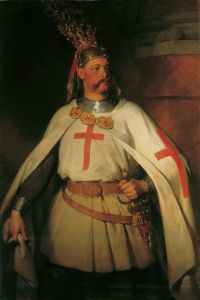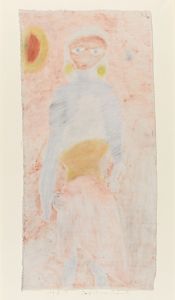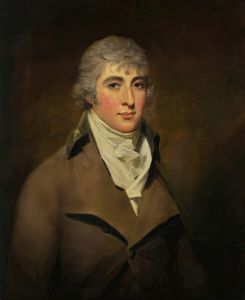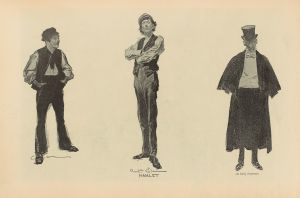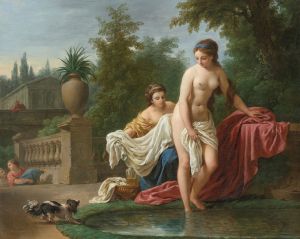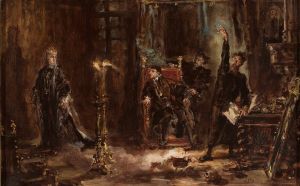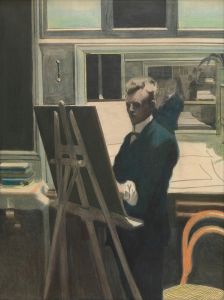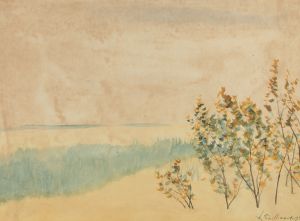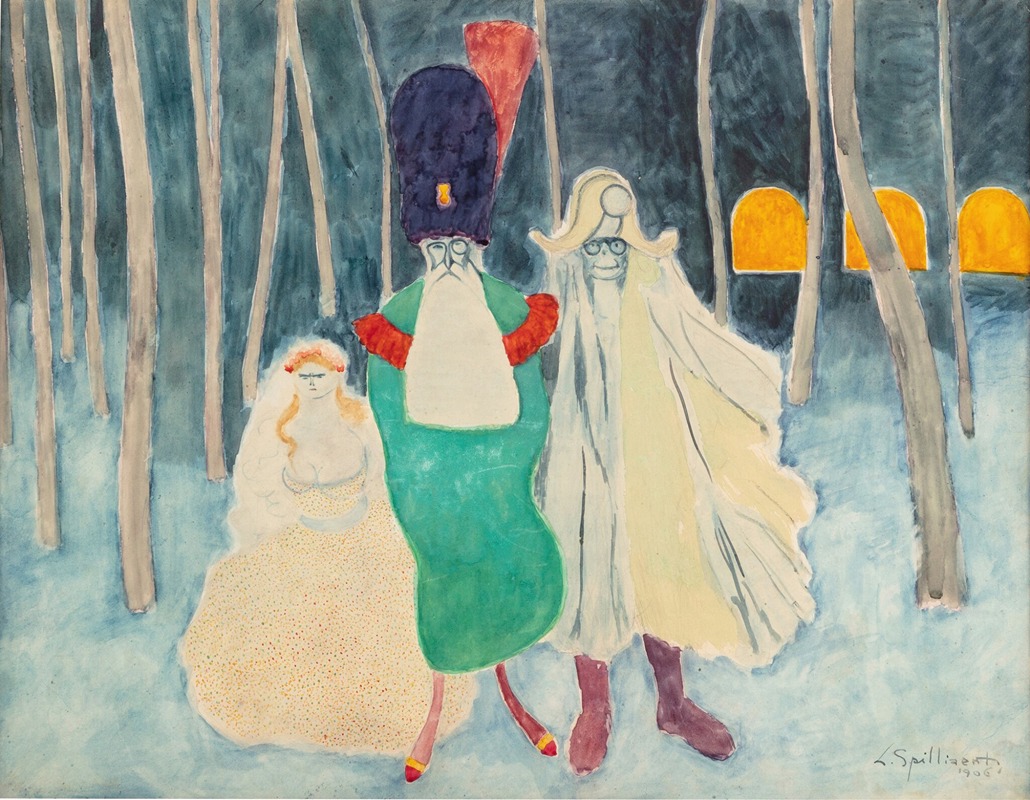
Mascarade. Léopold II, Napoléon et la bouquetière
A hand-painted replica of Léon Spilliaert’s masterpiece Mascarade. Léopold II, Napoléon et la bouquetière, meticulously crafted by professional artists to capture the true essence of the original. Each piece is created with museum-quality canvas and rare mineral pigments, carefully painted by experienced artists with delicate brushstrokes and rich, layered colors to perfectly recreate the texture of the original artwork. Unlike machine-printed reproductions, this hand-painted version brings the painting to life, infused with the artist’s emotions and skill in every stroke. Whether for personal collection or home decoration, it instantly elevates the artistic atmosphere of any space.
Léon Spilliaert was a Belgian symbolist painter known for his unique style that often combined elements of symbolism and expressionism. One of his notable works is "Mascarade. Léopold II, Napoléon et la bouquetière," which reflects his distinctive approach to art, characterized by a moody atmosphere and introspective themes.
"Mascarade. Léopold II, Napoléon et la bouquetière" is a painting that captures a complex interplay of historical figures and allegorical elements. Léopold II, the King of Belgium from 1865 to 1909, is a central figure in this work. His reign is often remembered for the controversial and brutal exploitation of the Congo Free State, which was his personal possession before it became a Belgian colony. This historical context adds a layer of depth to Spilliaert's painting, as Léopold II's legacy is one of both development in Belgium and infamy abroad.
Napoléon Bonaparte, another figure depicted in the painting, was a French military leader who rose to prominence during the French Revolution and became Emperor of the French. His influence extended across Europe, and his legacy is marked by both his military conquests and the Napoleonic Code, which laid the administrative and judicial foundations for much of Western Europe.
The inclusion of "la bouquetière," or the flower girl, adds an allegorical dimension to the painting. Flower girls were often seen as symbols of innocence and beauty, contrasting with the more politically charged figures of Léopold II and Napoléon. This juxtaposition might suggest themes of power, innocence, and the passage of time, although Spilliaert's exact intentions remain open to interpretation.
Spilliaert's style in this painting is characterized by his use of dark, muted colors and a somewhat ethereal quality that is typical of his work. His paintings often evoke a sense of introspection and melancholy, and "Mascarade" is no exception. The figures are rendered with a certain ambiguity, allowing viewers to project their interpretations onto the scene.
The painting reflects Spilliaert's broader artistic concerns, including his interest in the human psyche and the complexities of identity and power. His works often explore themes of solitude and existential reflection, and "Mascarade" can be seen as part of this exploration. The choice of historical figures and the allegorical flower girl may serve to question the nature of power and legacy, inviting viewers to reflect on the moral and ethical dimensions of leadership and history.
While Spilliaert is not as widely known as some of his contemporaries, his work has gained recognition for its unique contribution to the symbolist movement and its exploration of deep psychological themes. "Mascarade. Léopold II, Napoléon et la bouquetière" stands as a testament to his ability to weave complex narratives through his art, using historical and allegorical figures to probe the depths of human experience.





